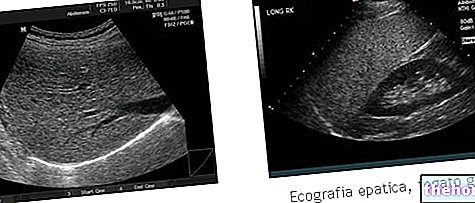Generality
A biopsy, or biopsy examination, is a medical procedure, usually having a diagnostic purpose, which involves the collection and subsequent analysis in the laboratory, under the microscope, of a sample of suspicious cells, whether they are part of an organ or an internal tissue or a portion of skin.

There are various types of biopsy: skin biopsy, needle biopsy, endoscopic biopsy, excisional biopsy and perioperative biopsy.
Today, thanks also to medical advances, biopsy procedures are linear, safe and low risk for the patient
Usually, the results of a biopsy are available within a few days.
What is a biopsy?
A biopsy, or biopsy examination, is a medical procedure, generally with diagnostic purposes, which consists in the collection of a sample of cells from a suspicious tissue or organ and its subsequent analysis in the laboratory, using a microscope.
Thanks to medical advances, collection tools and techniques are currently available that allow the collection of cellular samples from any region of the human body, be it the skin or an internal organ located in a rather delicate position.
WHO IS RESPONSIBLE FOR ITS EXECUTION?
Generally, during a biopsy, a surgeon or an interventional radiologist takes care of the collection of the cell sample, while a doctor specialized in pathological histology takes care of the laboratory analyzes.
ORIGIN OF THE NAME
The term biopsy has Greek origin and derives from the "union between the word" bios "(βίος), which means" life ", and the word" opsis "(ὄψις), which means" vision ".
Therefore, based on what has just been stated, the literal meaning of biopsy is "vision of life".
The use of such a term is explained by the fact that laboratory analyzes consist in the observation, under the microscope, of a sample of living cells.
The merit of having introduced the use of the word "biopsy" into scientific language belongs to the French dermatologist Ernest Besnier. It was the year 1879.
Uses
Generally, doctors resort to a biopsy in the presence of important morbid conditions, for which there are still some doubts or uncertainties regarding the characteristics, causes, severity, etc.
The conditions that usually justify the use of a biopsy include:
- Tumors (or neoplasms). In these situations, a biopsy allows doctors to study in detail the cellular and molecular characteristics of the malignant tissue forming the tumor mass.
From a biopsy on a tumor, two important parameters emerge that give a fairly precise idea of the severity of the condition in progress: the staging (or stage) and the grade.
The most common tumor biopsies are those carried out for breast tumors, for skin tumors (melanoma, etc.), for tumors of the gastrointestinal tract, etc. - Inflammation of internal organs of extreme importance, such as the liver or kidneys. Through a biopsy, doctors are able to trace the causes and severity of hepatitis (inflammation of the liver), nephritis (inflammation of one or both kidneys), etc.
- Serious infectious diseases affecting internal organs, such as the lungs.
Infections that may require a biopsy are severe pneumonia, tuberculosis, etc.
- Non-cancerous skin diseases.
- All those conditions in which a certain organ or group of organs has suffered a decline in its functional capacity (eg: renal failure, liver failure, etc.). In such circumstances, a biopsy is mainly used to trace the precise triggering causes.
Types
There are various types of biopsy. To distinguish each type of biopsy is the instrumentation used to collect the cell sample.
Going into more detail, the types of biopsy available today are:
- Skin biopsy, also known as biopsy punch or excision punch;
- The needle biopsy;
- Endoscopic biopsy;
- The excisional biopsy;
- The perioperative biopsy.
The use of one type of biopsy rather than another depends on where the cell sample is to be collected. There are, in fact, tissues and organs of the human body that lend themselves better only to certain types of biopsy examination (if not only to one type).
Procedure
In this chapter, we will address the procedures of the various types of biopsy that exist.
SKIN BIOPSY
As it is easy to understand, skin biopsy is indicated for studying the characteristics of diseases affecting the skin.
For its execution, doctors use a special surgical instrument, a sort of circular scalpel, capable of making holes in the skin and removing the anatomical area corresponding to the area of application.
In general, the use of skin biopsy requires the injection of a local anesthetic (local anesthesia), at the level of the collection area.
AGOBIOPSIA
Needle biopsy is a type of biopsy which, for the collection of the cellular sample, requires the use of a needle of variable dimensions; needle that the doctor inserts subcutaneously, in the organ or tissue to be analyzed.
Very often, to identify the precise point of the sample, those who perform this type of biopsy make use of the images in real time resulting from instrumental procedures, such as an "ultrasound scan, a CT scan or an MRI scan.
If the needle provided for the collection of the cellular sample is of considerable size, needle biopsy requires the use of local anesthesia, as, otherwise (ie without anesthesia), it could be very painful for the patient.




























